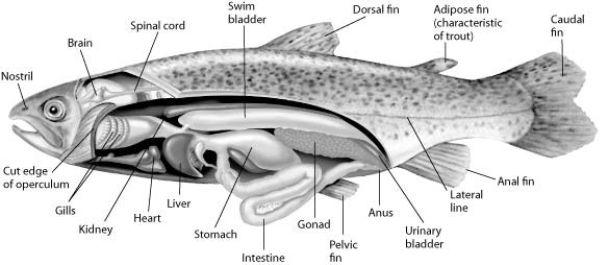Multiple Choice
Use the following figure and information to answer the question.
Fishes that have swim bladders can regulate their density and, thus, their buoyancy. There are two types of swim bladder: physostomous and physoclistous. The ancestral version is the physostomous version, in which the swim bladder is connected to the esophagus via a short tube (see the figure) . The fish fills this version by swimming to the surface, taking gulps of air, and directing them into the swim bladder. Air is removed from this version by "belching." The physoclistous version is more derived and has lost its connection to the esophagus. Instead, gas enters and leaves the swim bladder via special circulatory mechanisms within the wall of the swim bladder.
Which shark structure is closest in function to a swim bladder full of gas?
A) its lateral line system
B) its spiral valve
C) its liver
D) its gills
Correct Answer:

Verified
Correct Answer:
Verified
Q2: How did the evolution of the jaw
Q7: The earliest known mineralized structures in vertebrates
Q8: Many sentences in this chapter include the
Q9: Which of these might have been observed
Q10: Which of the following could be considered
Q10: Use the following information to answer the
Q11: Guppies are a common aquarium fish. They
Q20: Living vertebrates can be divided into two
Q41: Vertebrates and tunicates share _.<br>A) jaws adapted
Q50: Which of the following statements about the